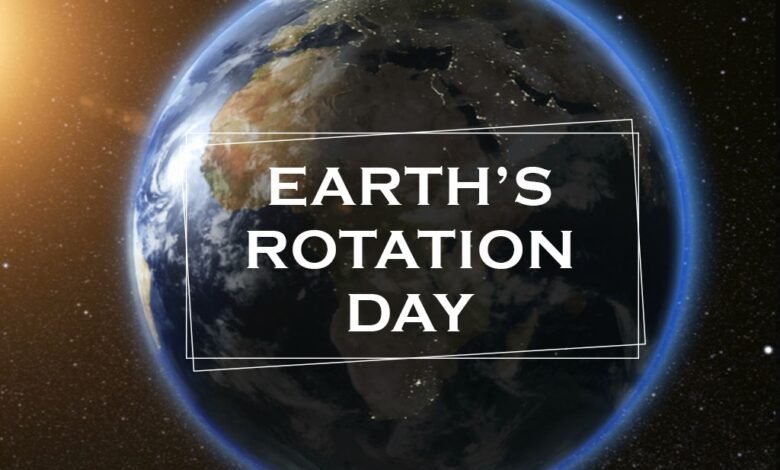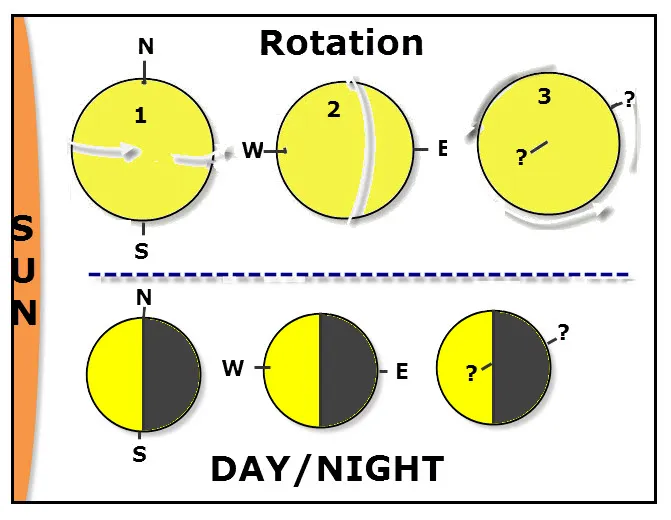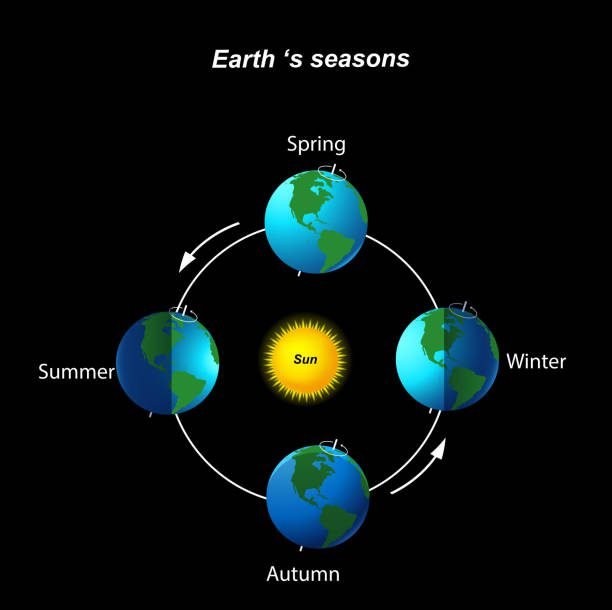Earth Rotation Day: January 8. Embracing The Spin: Unveiling The Majesty Of Earth Rotation On This Special Day.

Earth Rotation
What is Earth Rotation?
Earth rotation is the continuous rotation of our planet around its own axis, an imaginary line running from the North Pole to the South Pole. This axis rotation is responsible for the day and night cycle that determines our daily lives. The Earth completes one rotation approximately every 24 hours, and this rhythmic movement plays a fundamental role in shaping the nature of life on Earth.
Earth rotation affects a variety of natural phenomena. As the Earth rotates, different parts of its surface are exposed to the sun’s rays, causing alternating periods of day and darkness. This regular alternation creates a cycle of sunrise and sunset that marks the beginning and end of each day. The concept of time divided into 24 hours is inextricably linked to the rotation of the Earth and forms the basis of calendars and daily schedules.

Earth rotation speed is uneven across its surface due to its flat, ellipsoidal shape. The equator rotates faster than the poles. These changes affect factors such as gravity and atmospheric conditions. Additionally, the Earth’s rotation is not completely constant over long periods of time, and factors such as tectonic activity and mass redistribution within the Earth can affect its rotation dynamics.
In addition to its practical significance, Earth rotation also has cultural, symbolic, and aesthetic significance. Sunrises and sunsets have inspired art, literature, and religious beliefs throughout human history. The regularity of Earth’s rotation provides order and predictability that shapes the evolution of life on Earth.

In summary, we can say that the Earth’s rotation is the continuous rotation of the planet around its axis, resulting in the change of day and night. This fundamental movement influences timekeeping, climatic conditions and various natural phenomena, highlighting their importance in shaping the conditions that support life on Earth.
Earth Rotation Day:
Earth Rotation Day, celebrated on January 8, is an exciting moment in the cosmic ballet that shapes our daily lives. Although it is not an officially recognized global holiday, it provides an opportunity to reflect on the incredible dynamics of the Earth and how its rotation affects our existence.
The rotation of the Earth is a fundamental aspect of the celestial dance. Every 24 hours, our planet makes a complete rotation around its axis, an imaginary line running from the North Pole to the South Pole. This axis rotation is responsible for the day and night cycle. This is because throughout this cycle, different parts of the Earth turn toward the Sun. The concept of Earth Rotation Day invites us to consider the meaning of this rhythmic movement.

This is not just an astronomical phenomenon. It is the driving force behind the circadian rhythms that govern life on Earth. From the smallest microbes to the largest mammals, countless organisms have evolved in harmony with the regularity of day and night.
One of the main consequences of Earth’s rotation is the occurrence of sunrise and sunset. As the Earth rotates, different areas receive sunlight, creating a vivid transition between sunrise and sunset. This everyday sight has inspired cultures, artists and poets for centuries and symbolizes rebirth, hope and the cyclical nature of existence.
In addition to cultural and aesthetic influences, Earth rotation also affects our sense of time. The concept of a day, which is 24 hours divided into hours and minutes, is closely related to the rotation of the Earth. Our calendars, schedules, and daily routines are organized around these cosmic clocks, a testament to the profound influence celestial mechanics have on human civilization.

On a more technical level, Earth Rotation Day encourages us to consider the speed of the Earth’s rotation and how quickly it rotates. While the rotation speed is relatively constant over short periods, factors such as the Earth’s shape, atmospheric conditions, and geological events can influence its rotational dynamics. Scientists use precise measurements and advanced technologies to monitor these changes and ensure accurate timekeeping.
It’s worth noting that Earth Rotation Day is also an opportunity to appreciate the efforts of astronomers, geophysicists, and other scientists who contribute to our understanding of our planet’s motion. Their work not only enhances our knowledge of Earth but also plays a crucial role in fields like navigation, satellite communication, and climate research.

Moreover, Earth Rotation Day serves as a reminder of the interconnectedness of celestial bodies. Earth’s rotation is not an isolated event, but part of a larger cosmic dance within the solar system and beyond. As we celebrate this day, we realize our place in the vast universe and the complex relationships between celestial bodies.
In recent years, discussion of Spin the Earth Day has expanded to include environmental awareness. The health of our planet is inextricably linked to the dynamics of Earth’s rotation. Issues such as climate change, melting Arctic ice caps, and rising sea levels highlight the delicate balance that sustains life on Earth. Recognizing the cycle on Earth Day can serve as a catalyst for discussion about environmental issues and our collective responsibility to preserve our planet for future generations.
In conclusion, Earth Rotation Day may not be celebrated as widely as other holidays, but its importance is undeniable. It encourages us to marvel at the wonders of the universe, reflect on our relationship with time, and consider the broader implications of Earth’s rotation. As we celebrate this day, let us embrace a sense of wonder and gratitude for the complex dance that sustains life on our wonderful blue planet.















